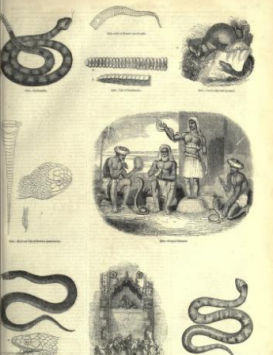This project examines modes of encounter between humans and snakes from the 1780s to the 1870s, focusing upon Britain and British India, to reassess how knowledge about animals was produced and circulated in the context of empire. By analyzing scientific books and papers, newspapers and periodicals, travel accounts, collections of skins, and government archives from Britain and India, this study provides the first connected account of how snakes were collected, transported, described, experimented with, represented, and exploited for a variety of ends. The thesis engages with major historiographies concerning collecting, experimentation, colonial natural history, testimony, and scientific spectacle to recover an affective dimension of natural history in imperial encounters.
Snakes were immediately familiar and persistently ambiguous in nineteenth-century Britain and its empire, present at every level of society through the reading of Scripture, in works of natural history, and imperial print culture. They traversed literary genres, appeared in works of art, entertained as living attractions in shows and menageries, and persisted as dead specimens in museums, but their material and figurative presence in London was contingent upon the creation and maintenance of British imperial networks. The practices of the natural history of snakes were closely harnessed to personal ambition and colonial exigencies. Given the relative lack of economic and bodily harm they caused, snakes loomed disproportionately large in the imperial imaginary, where they were entangled in a discourse of "civilizational" difference, and ultimately became the target of an unsuccessful state-driven extermination policy.

